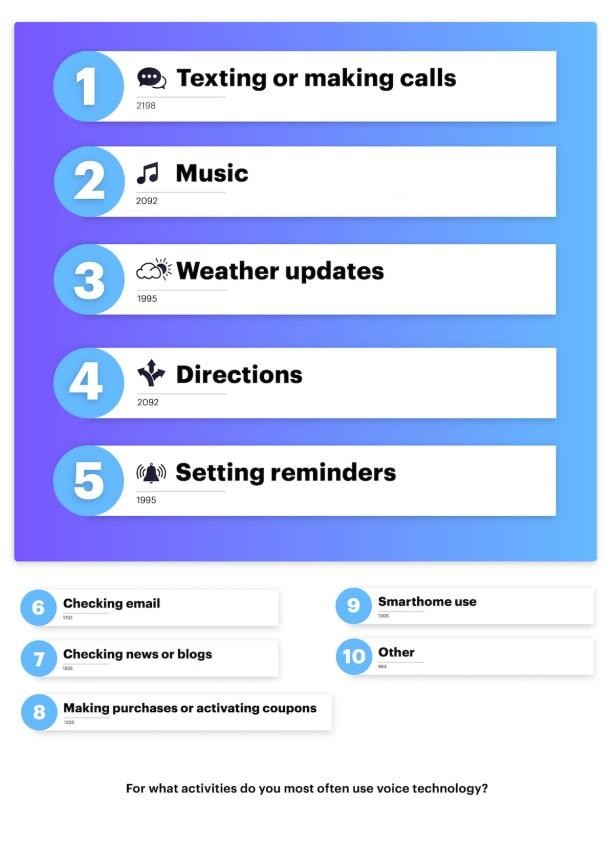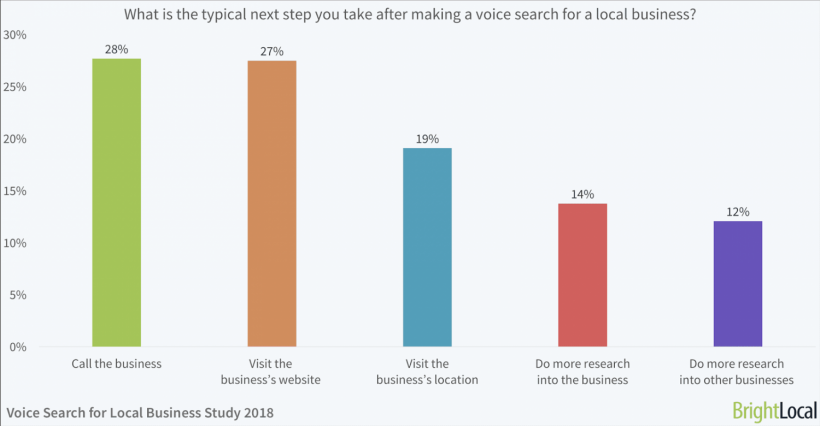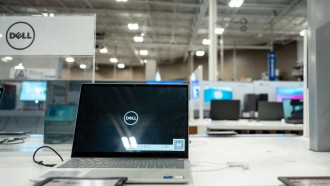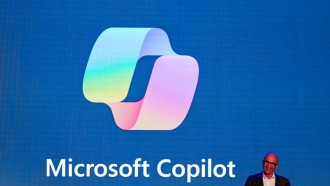It's been a long time since Alexa, Bixby, Cortana, or Siri have opened their way into the comfort and privacy of our homes. Undoubtedly, voice technology has steadily evolved toward maturity, transforming voice-controlled devices into a constant part of our user experience. From voice-controlled cars to smartwatches, home gadgets, or TVs, voice marketing practically knows no boundaries.
More and more marketers use voice technology to interact with their customers and create a deeper brand connection by making their business heard! The audio revolution is already knocking at our door. But is it the big, bad wolf we are opening the door to or an unparalleled user experience? We will find out today! But we place our bets on the latter...
What is VM?
A basic definition of Voice Marketing would be this one: the use of marketing tactics and strategies that allow businesses and brands to reach their target audience by using voice-enabled digital devices such as smartwatches, smart TVs, cars, or home assistants. Obviously, for a voice marketing strategy to be efficient, it needs to take into consideration certain aspects such as customer behavioural changes and the context in which people prefer to use voice-first information.
What makes voice technology such a life-changer? Well, the fact that we are naturally-born sluggish...at least for certain things. Plus, you don't need to be a rocket scientist to realize that people speak faster than they write. But do consumers trust voice technology? Oh yes, they do!
According to Microsoft's 2019 Voice Report, 72% of the surveyed respondents had used voice search through a digital assistant in the previous 6 months. But what do people use voice search for? According to the research, 68% search for quick facts, 65% look up directions, 52% search for services and products, while 31% compare services and products. You can find the whole research here. What comes out strong from this research is the fact that voice search is already turning into a basic condition for business success. What's more, 57% of the enquired people expect that, by 2024, their favourite brands will have their own digital assistants.
What VM tools can be used?
Back in 2018, Capgemini Digital Transformation Institute released a report according to which, in three years, voice assistants will become a prominent mode of consumer interaction. You can download the full report here. Time has gone by... and here we are, in 2021. How have VM tools evolved? Let's take a look at some interesting examples.
Starbucks' voice-activated ordering system
People hate waiting in line. And that's a proven fact. And people love enjoying a good cup of coffee while driving. That's another proven fact. So what did Starbucks do? Well, they developed a voice-operated app that allows their customers to order their coffee and pay for it in advance using Alexa or Bixby. Does it work? It certainly looks like it does! You can find more information about My Starbucks® barista app here.
Kayak's voice-operated booking system
Booking a hotel or working out your travel options can sometimes turn into a tedious process. Kayak thought of a hassle-free and time-saving method that allows people to easily and comfortably book a hotel room by using an Alexa skill. You can read more about Alexa's lovely relationship with Kayak here.
Elinext's Music Streaming App
"Music gives a soul to the universe, wings to the mind, flight to the imagination, and life to everything," used to say Plato. Well, the guys at Elinext dedicated all their efforts to developing a fully-functional app for Asteroid devices. How can this app improve your user experience? By allowing you to voice-search artists, albums, and tracks. But there's more to it: charts, new releases, playlists, and collection sections for easy viewing and managing of your favourite songs. You can learn more about this app here.
BevMo!'s Voice-Enabled On-Shelf Shopping Assistant
At some point in our lives, we've all been there...reading label after label in a desperate search for a specific product. Well, BevMo! made whiskey lovers' lives a lot easier! They developed a SmartAisle shopper platform that interacts with buyers by means of an intuitive voice interface. Getting product information and recommendations has turned into a breeze. You can read more about this shopping assistant here.
What user problems does VM solve?
We have already mentioned customers' innate sluggishness. But does virtual marketing address other consumer-related problems? It is clear that we have reached the point where technological advancements and customer preferences have converged.
Why do customers prefer voice experiences? Because talking is easier than writing and saves valuable time. What's more, voice technology provides access to services and products to consumers whose special needs have been neglected (for instance, blind or illiterate people). The voice-operated technology provides the user with a more human-like, natural-feeling immersive experience with almost instant results. What current consumers are craving for are hands-free, optimized, and customized experiences. Just think of Alexa which is now able to differentiate between the voices of various users.
As stated in the Voice Technology Trends in Marketing: Everything Digital Marketers Need to Know, a research conducted by Campaign Monitor, what consumers are mainly looking for is immediacy on the go. To get an idea of why and when do people make use of voice technology, just take a look at these charts:


How can big enterprises make the most of Voice Marketing?
As we have already seen, the use of voice technology among consumers is on a rising tide, forcing businesses to revamp their digital marketing tactics and strategies.
Most businesses offer various types of customer support help: direct phone calls, e-mails, chatbots, etc. Let's take for example the valuable data regular phone calls provide retailers with. According to the research led by BrightLocal in 2018, 28% of the people who make a local voice search end up calling the business, while 18% end up visiting the business. That makes a total of 47%.

After conducting a new Local Consumer Review Survey in 2019, results showed that 27% of the consumers decide to contact or visit a business after they read a positive review. 27% is much less than 47%, isn't that so? It appears that increasing sales is possible if marketers understand the importance of search queries.
Often, consumers who use voice search to look for a business are not interested in a specific product or a price. They want to find the business' phone number or location. It seems logical that, in order for consumers to be able to discover your business, your content must be tailored accordingly. Yes, we are talking about VEO (voice engine optimization) and savvy content marketing! Phone conversations with customers are a valuable source of information that smart marketers can use to their benefit by identifying the questions customers ask (i.e. voice keywords) and implement them in their marketing strategies. Of course, phone conversations can be revised manually. But using AI can ease the whole process.
Another possible solution would be for businesses to enter a partnership with a platform builder (e.g. Amazon) and pay the platform to recommended their products or services by voice assistants.
To sum up
Using voice technology allows businesses to speak directly to their target audience and provide them with relevant, user-friendly, and customized user experiences. Enhancing customer experience translates into increased website traffic and, ultimately, increased sales.
Is it wise to invest in voice marketing? Researches on trends, customer behaviour, and customer expectations demonstrate that savvy consumers are highly receptive to innovative marketing strategies.
So why not bring some peace to your prospective clients' hectic lives?





